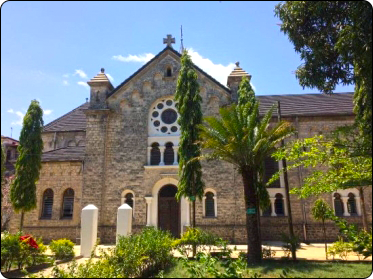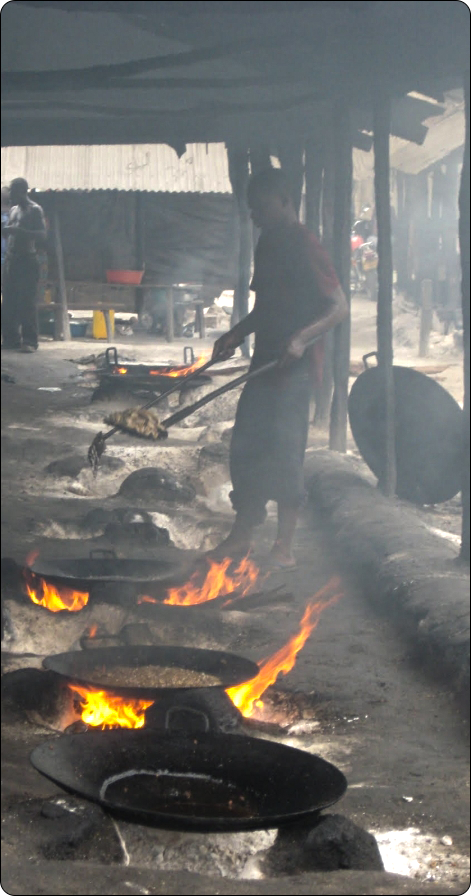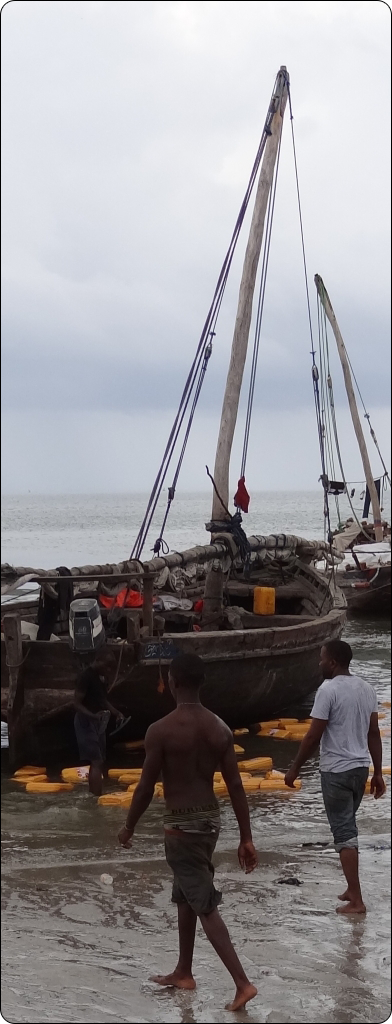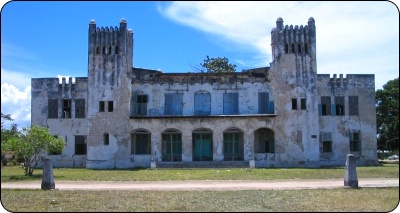Bagamoyo...
With its cobwebbed portals and crumbling German-era colonial buildings, central Bagamoyo, or Mji Mkongwe (Stone Town) as it’s known locally, is well worth exploration. The most interesting area is along Ocean Rd. Here you’ll find the old German boma, built in 1897, and Liku House, which served as the German administrative headquarters.
There is also a school, which dates from the late 19th century and was the first multiracial school in what is now Tanzania. On the beach is the German customs house (1895); Bagamoyo’s port, where you can watch boat builders at work; and a busy fish market (on the site of the old slave market), with lively auctions most afternoons. Northwest of here are several small streets lined with carved doors similar to those found elsewhere along the coast. Further south is the mid-19th-century Old Fort.
There is also a school, which dates from the late 19th century and was the first multiracial school in what is now Tanzania. On the beach is the German customs house (1895); Bagamoyo’s port, where you can watch boat builders at work; and a busy fish market (on the site of the old slave market), with lively auctions most afternoons. Northwest of here are several small streets lined with carved doors similar to those found elsewhere along the coast. Further south is the mid-19th-century Old Fort.

A day trip to Bagamoyo town, places to visit
1: Kaole ruins
Just southeast of Bagamoyo are these atmospheric ruins. At their centre are the remains of a 13th-century mosque, which is one of the oldest in mainland Tanzania and also one of the oldest in East Africa. It was built in the days when the Sultan of Kilwa held sway over coastal trade, and long before Bagamoyo had assumed any significance.
Nearby is a second mosque, dating from the 15th century, and about 22 graves, many dating from the same period. Among the graves are several Shirazi pillar-style tombs reminiscent of those at Tongoni, but in somewhat better condition, and a small museum housing Chinese pottery fragments and other remnants. Just east of the ruins, past a dense stand of mangroves, is the old harbour, now silted, that was in use during Kaole’s heyday.
2: College of Arts
Located about 500m southeast of Bagamoyo along the road to Dar es Salaam is this renowned theatre and arts college, home of the national dance company. When school is in session there are occasional performances, and it’s usually possible to arrange drumming or dancing lessons.
The annual highlight is the Bagamoyo Arts Festival, usually held around late September or October. The festival features traditional dance and drumming performances, acrobatics displays, drumming workshops and much more.
The festival is not the most organised – advance information on schedules is rarely available – but it is a good way to meet Tanzania's up-and-coming artists and performers, and to get introduced to local talent and culture.
3: Catholic Museum
About 2km northwest of town and reached via a long, mango-tree-shaded avenue is the Catholic mission and museum, one of Bagamoyo’s highlights, with well-labelled displays from Bagamoyo's heyday. In the same compound is the chapel where Livingstone’s body was laid before being taken to Zanzibar Town en route to Westminster Abbey. The mission dates from the 1868 establishment of Freedom Village and is the oldest in Tanzania.
4: Caravan Serai Museum
This undistinguished museum has a small display documenting the slave trade. It's at the town entrance. More interesting than the present museum is the site at which it is built, which was formerly the starting point for slave and trade caravans to the interior.
5: Crocodile Farm Tour
Visit a crocodile farm and learn how these wild predators are kept. Get to know their social behaviors, growth, live capture techniques, feeding/hunting techniques and local uses of various products.


6: Hanging Post
The hanging place of Bagamoyo used to be the location of a big tree where revolters against the 19th century German rule of the area and abolishment of slave trade were hanged, most of whom were supporters of the Abushiri Rebellion. The tree no longer exists, but in its place is a monument built in the 20th century by the government of Tanzania to demarcate its location.
Most of these hangings were done around 1889 (end of the revolt), with most of its victims never being buried, but rather being disposed. Right next to the monument is a well that was built by philanthropist and businessman Sewa Haji Paroo in 1894, at a time when there was a shortage of water in Bagamoyo. This was one of the many that he built in the town, with an aim of making sure that the town's people had good access to water.
7: Old Boma of Bagamoyo
The Old Boma of Bagamoyo is one of the many historical buildings that are within the old town conservation area of Bagamoyo. It used to be an old state house that was built by the Germans at the end of the 19th century, with the sole purpose of being a residence for its leaders in the area. It was only used by them for a few years before their capital was moved to then Mzizima or currently known as Dar es Salaam, due to the shallow water depth of the Bagamoyo port.
It was again used by the British after their takeover of the German colonies from 1919 until 1961 when the country got its independence. Since then, it has been under the jurisdiction of the Tanzanian government although it was never used as a state house since 1961. In 1995 it was turned into a historical building.
8: Old Customs house of Bagamoyo
The Old customs house of Bagamoyo is one of the many historical buildings that are located inside the Old town conservation area of Bagamoyo - Tanzania. It has two buildings, on opposite ends of a rectangular compound, one of which is at the compound's southern end and the other at the northern end. The northern building is well maintained and is still in use today, with a lot of added renovations, while the southern building has seen its roof and several walls collapse.
The northern building serves as an office for the Tanzania Revenue Authority, or a customs house for monitoring any shipment of goods done by dhows headed to Zanzibar from Bagamoyo. Most of these can be seen parked in front of the buildings at low tide.
9: Fish Market
The Dhow harbour of Bagamoyo is where many of the town's fishermen anchor their boats and it is located on the coastline that is nearest to the old town conservation area of Bagamoyo
10: Beach Relaxation and more
Price includes :
1: Transfers
2: Lunch
3: Professional historical guide
4: Mineral water
5: All the entry fees
Do not include:
1: Tips
2: Things of personal needs like cigarettes and beers


 English
English  Français
Français 



